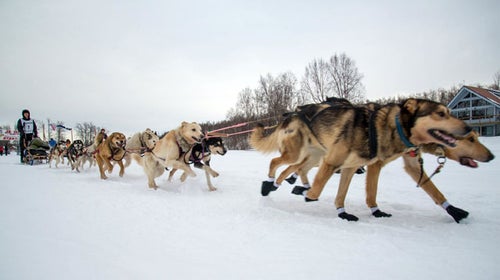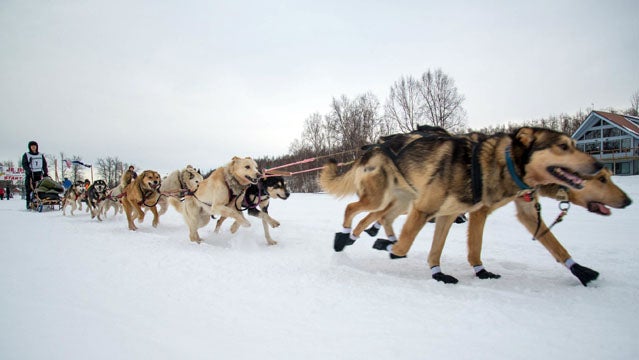It’s Iditarod season in Alaska, and the action kicked off last week with the Junior Iditarod, a proving ground for aspiring mushers ages 14-17. Sixteen-year-old Noah Pereira, a rookie from Rochester, New York, won the 150-mile dogsled race from Knik Lake to Yentna Station to Willow Lake, edging out last year’s champion, 16-year-old Conway Seavey, by four minutes.
Raising Rippers
 Noah Pereira.
Noah Pereira. Noah Pereira.
Noah Pereira.So how did a kid from upstate New York beat the Alaska talent? Noah started mushing with local dogsledders when he was 10. Then his dad bought some dogs and they started their own . And for the past two years, Noah has been coached by 25-year-old Dallas Seavey, who last year became the youngest musher ever to win the 1,049-mile Iditarod, which began this weekend in Anchorage.
“This year’s race was close. At times I had to shut my eyes and not look,” says Dallas, about watching Noah and his younger brother, Conway, vie for the win. “I got a glimpse to how my mom feels when my dad and I race. It is not a question about who she wants to win. If we are both in the lead, then it has been a good race for our family. But it was difficult to watch, and dog races are great for teaching many life lessons.”
Over the weekend, I caught up with Noah, who has been in Alaska with his dad since early December, and won’t go back to Rochester until after the closing ceremonies in Nome on March 17.
Tell me about your training in New York and then the last few months in Alaska.
We have nine dogs at home in our kennel in Rochester, and I typically do sprint races which is five-10 miles with four or six of the dogs. The biggest adjustment for me doing the 150-mile Junior Iditarod was the camping I did with the team for 10 hours. During the mandatory break, you check your team, care for the dogs while they rest, and feed them. This does not leave room for a lot of sleep. I ended up sleeping 20 minutes because after the tending I stayed up and talked with all the other mushers having fun.
Do you aspire to do race Iditarod when you turn 18?
I think it ‘d be really neat to do it, but it costs a lot of money and takes two years to qualify. I need 750 race miles, and by the time I acquire that in a year the Iditarod has passed. But I hope to be back for it the following March. I will definitely continue mushing in the sprint races back home. It is kind of funny to think about racing that length after 150 miles.
Did being coached by Dallas Seavey give you an advantage?
Absolutely. He’s always trying to push himself and the caliber of the dogs. Dallas hooked me up with an awesome team. It was fun to work with them. Being a helper at the kennel is the only way I could have done as well as I did in the race. Since I have been up here, I have been helping Dallas every day with his dogs for a minimum of 10 hours a day. Sometimes it is mushing the dogs on a 10-mile run, other times it is sled repair in the yard, learning the ropes, and paying my dues before it is my time to race. I would like to come back up next year, but we will see how the cards play out.
I know Dallas has been known to run alongside his dogs for 80 miles at a time. Did you run along your dogs? How did you train for that?
When you are training the dogs, you stay on the sled so that there is the most weight you can have on it. So I didn’t run beside them to train. When I asked Dallas he said you are too busy doing dog stuff to find time to run. I wish I had, though, because the last 10 miles of the Junior Iditarod Race I was pushing the sled, running.
How do you think the Junior Iditarod prepares you for the Iditraod?
I have a little idea of what it might be like. It’s a lot harder than I ever imagined with the lack of sleep. This year it was warm for the race, staying in the 20s, but some years it dips to negative 40 or negative 45, and I can’t imagine being out there for long stretches without a place to warm up. That has to be challenging day after day. But the longer ride was nice compared to the sprint races I am used to doing at home.
What’s your advice to young mushers?
Keep going. Keep pushing yourself as hard as you can and hopefully you will make it here. I couldn’t have done this without the support and help of my parents, friends, family, and teachers. It is great to have support like this from my parents. I hope every kid gets to do something a little like this.


